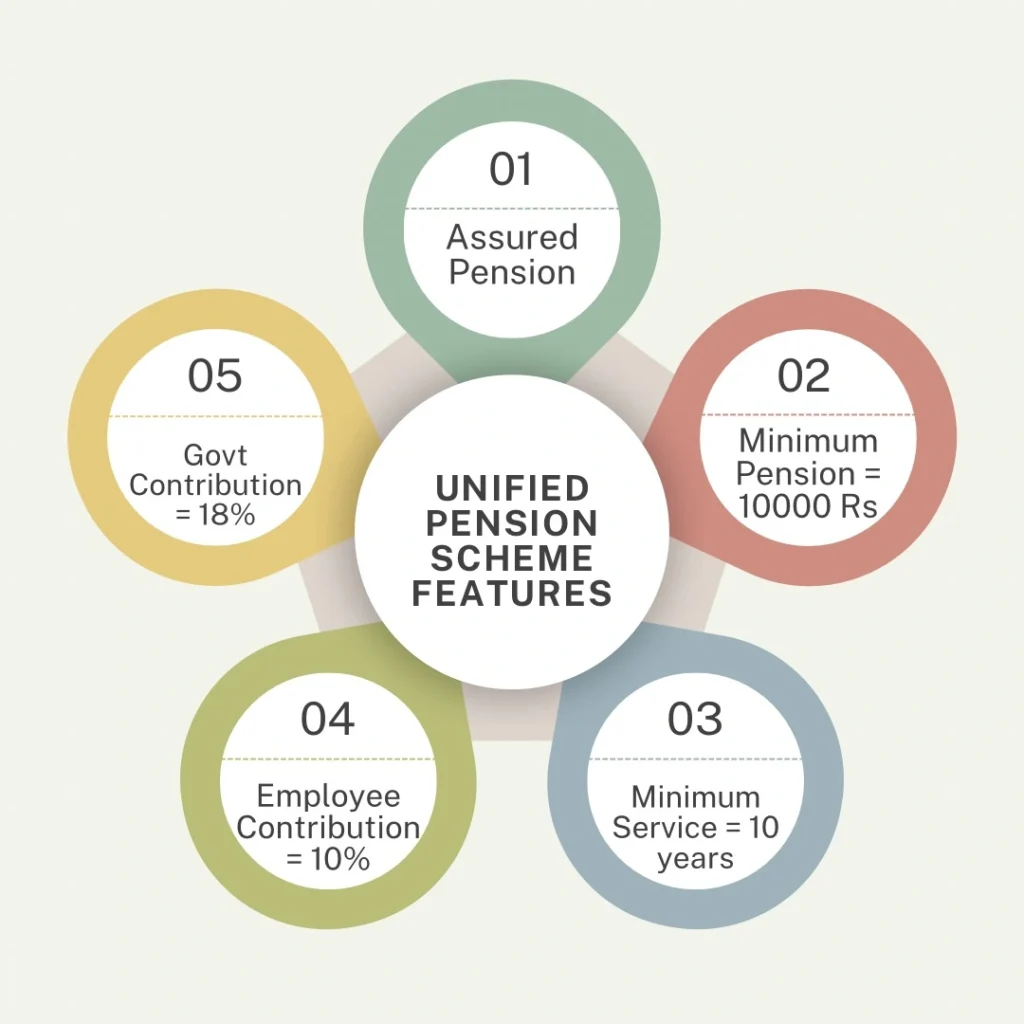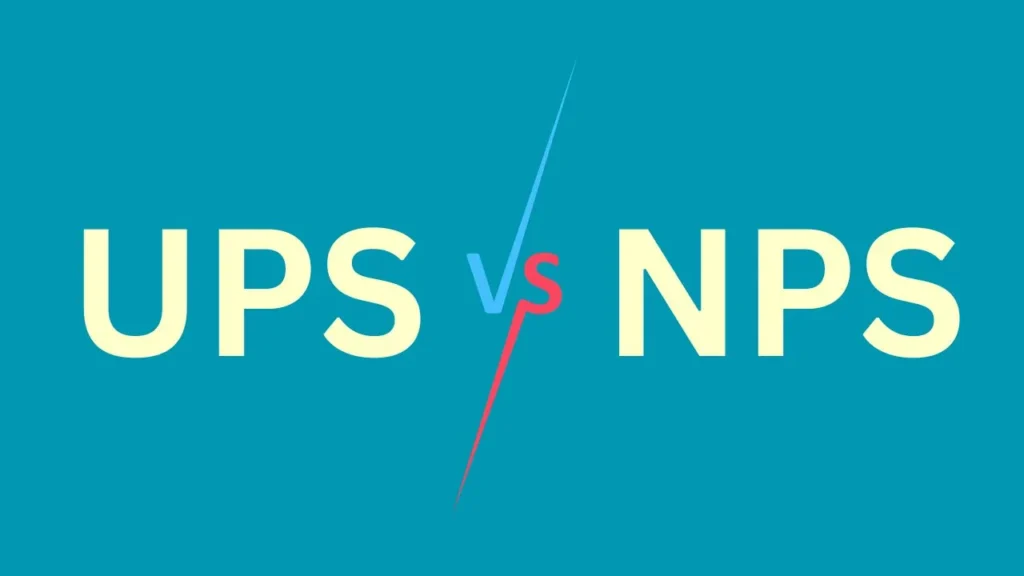Check Your UPS Pension
Government of India has given its NPS employees a deadline of 01-July-2025 to decide whether they want to switch to the Unified Pension Scheme, or continue in the NPS regime. In this context, if you want to weigh the monetary benefits of UPS, then this article is for you.
In this article, you will get the UPS Pension Calculator, that will help you assess the pension payable to you after your retirement. In addition, you will also get the details of the family pension admissible in favor of an employee’s family after his demise.
Table of Contents
What is UPS Scheme?
UPS is a unified pension scheme floated by the central government for its employees in 2024. It is a scheme that has been devised as an alternative to NPS (New Pension Scheme), that was operationalized from 01-January-2004, and all the employees who joined their services after this date fall under NPS regime.
There were certain reservations regarding the NPS regime and employees were also not happy about it. The main cause of the concern was the lack of pension after retirement.
All that NPS had to offer was 60% of the corpus amount (formed by the contributions of the employee and employer) at the time of retirement. The remaining 40% would lie with the pension fund authority and the employee would get monthly returns from it based on its market performance. This was seen as the main hiccup as it did not offer any assured pension and linked the monthly return to the volatility of the market.
Owing to the above reasons, various state governments had started to roll back the NPS regime, and switch their employees to the famous and most beneficial OPS regime. This resulted in the central government devising a new scheme known famously known as Unified Pension Scheme (UPS).
How UPS Works?
UPS is a contributory scheme formed by the contributions of an employee and an employer.

The employee contributes 10% of basic pay + DA, and the employer also contributes the equal amount, and both form the individual corpus of an employee.
In addition, the employer also contribute 8.5% of employee’s basic pay + DA, and it forms the pool corpus. This contribution is to support assured payouts post retirement in favor of an employee.
Investment Pattern in UPS
UPS offers two investment patterns to an employee for individual corpus;
- Customized pattern: Here an employee can decide, how and where the individual corpus shall be invested.
- Default pattern: in case an employee does not opt for a customized patter, the money will be invested in a default pattern devised by the pension fund regulatory authority of India.
It is pertinent to mention here that an employee can give choice about the individual corpus only. The investment pattern for the pool corpus shall be decided by the central government.
Benefits of UPS
Unified Pension Scheme (UPS) offers a lot of benefits to its employees. They are;
- Assured pension payouts after retirement: The assured pension will be up to the 50% of the average basic pay for the last 12 months of an employees service. In addition to it, dearness relief shall also be admissible.
- If an employee has served for 300 months or more, then he/she will be entitled to 50% of the average basic pay for the last 12 months of his/her service.
- If an employee serves for less than 120 months, then he/she shall not be eligible for any pension after his retirement.
- If an employee serves for more than 120 months and less than 300 months, then pension proportional to his length of service shall be admissible in his/her favor.
- Assured minimum pension of 10000 Rupees: If an employee serves for more than or equal to 120 months, then he/she is entitled to a minimum pension of 10000 Rupees, irrespective of his/her last 12 month’s average basic pay.
- Family pension: In case of a death of an employee, UPS also provides for a family pension that shall be equal to the 60% of the last drawn pension by an employee.
| Condition | Pension |
|---|---|
| Service < 120 months | No Pension |
| Service = 300 months | 50 % of average basic pay + DR |
| Service > 300 months | 50 % of average basic pay + DR |
| 120 months <Service < 300 months | Proportionate to the length of service + DR |
Example 1: If an employee draws an average basic pay for his 12 months equal to ₹ 50000, and has given a service of 300 months or more, then he/she shall be entitled to a pension of ₹25000 + Dearness Relief.
Example 2: If an employee draws an average basic pay for his 12 months equal to ₹ 50000, and has given a service of 150 months, then he/she shall be entitled to a pension of ₹12500 + Dearness Relief.
Example 3: Suppose an employee draws an average basic pay for his 12 months equal to ₹ 19000, and has given a service of more than or equal to 120 months, then he/she shall be entitled to a pension of ₹10000 + Dearness Relief. In this case, if we apply point 1, his pension pay out is less than ₹10000. So point 2 regarding the assured payout shall apply and he/she shall get an assured minimum pension equal to ₹10000.
Family Pension Admissible Under UPS
One of the best features of the UPS scheme is the availability of family pension. If an employee dies, the family gets entitled to a family pension that will be equal to the 60% of the pension admissible to the employee immediately before death.
Suppose an employee dies in February and in January he had taken pension as given below;
Pension = 100000₹ and Dearness Relief DR = 50% = 50000. Total pay out = ₹150000
Now the legally wed spouse will be entitled to a family pension given below;
Family pension = 60% of ₹ 100000 = ₹60000, and Dearness Relief DR = 50% of ₹60000 = ₹ 30000. Total pay out = ₹90000.
How Our UPS Pension Calculator Works
Our UPS Pension calculator works on the basis of the following formula;
Assured Pension = (B/2) * (Q/300) * (IC/BC) , Where;
- B = Average basic pay for the last 12 months of an employee.
- Q = Length of service in months, and it should at least be 120 months.
- IC = Individual Corpus.
- BC = Benchmark Corpus.
Important Points:
(1) Here Q should be greater or equal to 120 months, failing which the pension payable will be zero.
(2) If Q > 300, it is taken as 300. It means Q saturates at 300.
(3) If assured pensions < ₹ 10000, it will be taken as ₹10000.
Individual Corpus vs Benchmark Corpus
Individual Corpus: It is the amount of money that is present in an employees individual corpus at the time of retirement.
Benchmark Corpus: It is the amount of money that should be present there in the individual corpus of an employee at the time of retirement if (1) he/she has neither missed any contributions, (2) nor made any withdrawals, and (3) has opted for default pattern of investment.
The individual corpus and the Benchmark corpus may or may not be equal to each other, depending upon various scenarios discussed below. However, here we will restrict ourselves to only such cases, where an employee has chosen the default pattern of investment.
Condition 1: If an employee has a service of 120 months to 300 months, and;
- he/she has neither missed any monthly contributions, and has nor made any withdrawals from his individual corpus, then his individual corpus = Benchmark Corpus.
- he/she has either missed any monthly contributions, and or has made any withdrawals from his individual corpus, then his individual corpus < Benchmark Corpus.
Condition 2: If an employee has a service of more than 300 months, and:
- he/she has neither missed any monthly contributions, and has nor made any withdrawals from his/her individual corpus, then his/her individual corpus > Benchmark Corpus.
- he/she has missed any monthly contributions or has made any withdrawals from his/her individual corpus, then his/her individual corpus may be equal to, or lesser than, or greater than the Benchmark Corpus.
Condition 3: If an employee has a service of less then 120 months;
- In this scenario, he/she will not be entitled for any pension, and therefore the concepts like individual corpus and benchmark corpus shall not be applicable.
Example for calculation of pension in UPS
Suppose an employee serves for 150 months, and his average basic pay for last 12 months of his service is ₹50000. If he has not missed any monthly contributions, then he is entitled to a pension given below;
Pension = (B/2) * (Q/300) * (IC/BC)
Here B = ₹50000, Q = 150, and IC = BC, therefore we have;
Pension = (50000/2) * (150/300) * (1) = ₹12500.
How To Use the UPS Pension Calculator
Enter you date of joining and date of retirement. Then enter the expected average basic pay for the last 12 months of your service. Once done, click on the calculate button and the pension payable to you will get displayed.
The tool automatically counts the length of your service period and then makes use of the above formula to calculate the amount.
Is our UPS Pension Calculator Reliable
Our UPS Pension calculator is 100 % reliable as it works on the basis of the formula provided by the government itself. In addition, we have also cross checked it with all the examples and conditions given by the government circular itself and it has passed all the test successfully.

